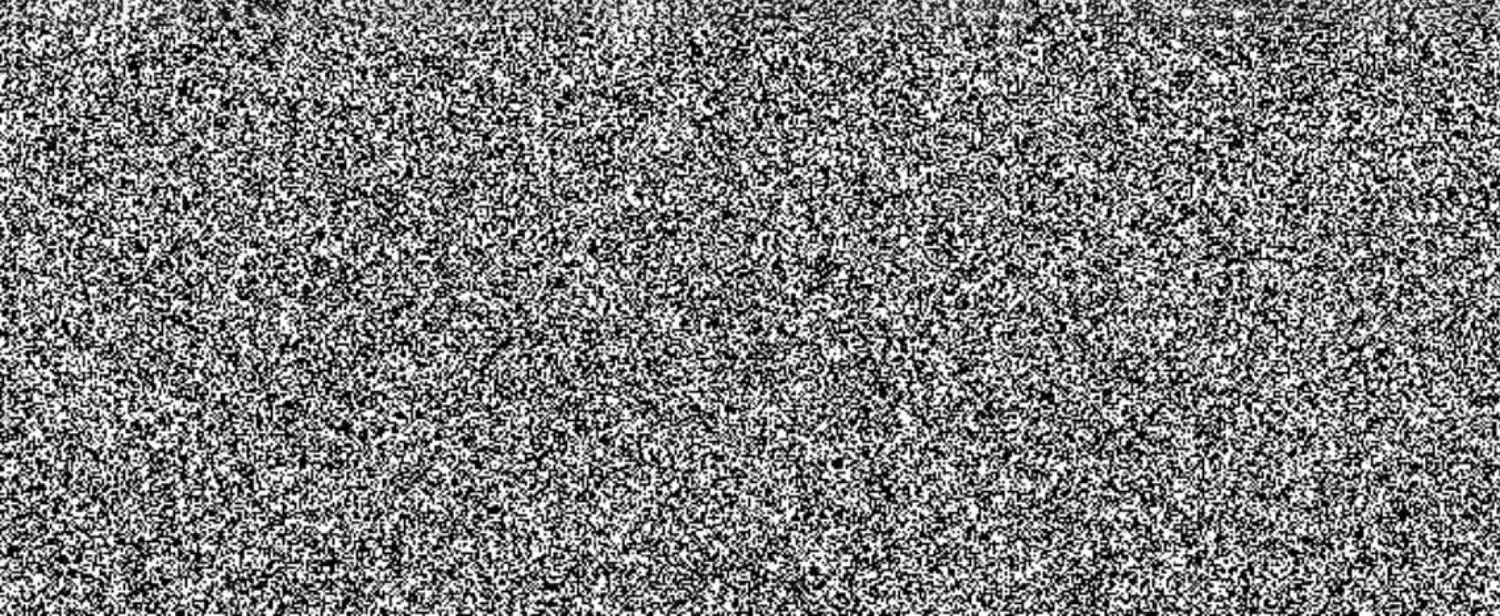Basics of Sound #
Did you know that when you hear a sound, your brain immediately interprets two key properties to help you understand it:
- Frequency/Pitch - Is the sound low like a bass or high like a scream?
- Amplitude/Intensity - Is the sound quiet like a whisper or loud like a vacuum?
Sounds are produced by vibrations that travel through the air like a wave. Air particles vibrate, in turn making particles next to them vibrate. The vibrations disperse from the source of the sound and lose intensity as they travel. When the sound reaches you, tiny bones in your ear detect the vibrations and your brain does the rest of the work.
Learn more about these concepts below or jump straight to how sound can help your baby sleep.
Frequency #
Frequency describes how fast sound waves vibrate. Frequency is measured in Hertz (Hz), 1 Hz is one vibration, or one cycle per second. The human ear can hear sounds between 20 to 20000 Hz, dogs can hear up to 45000 Hz.
Pitch describes how humans feel Frequency (high pitch sounds are high frequency, low pitch are low frequency).
Amplitude #
Amplitude is the strength, or power, of the sound waves. Amplitude is measured in Decibels (dB). Normal voices are around 60 dB, anything above 85 dB is considered an unacceptable limit in the workplace, a loud concert can go up to 120 dB and 160 dB instantly perforates an eardrum.
Intensity describes Amplitude passing through a given area, in a given time, in a given direction.
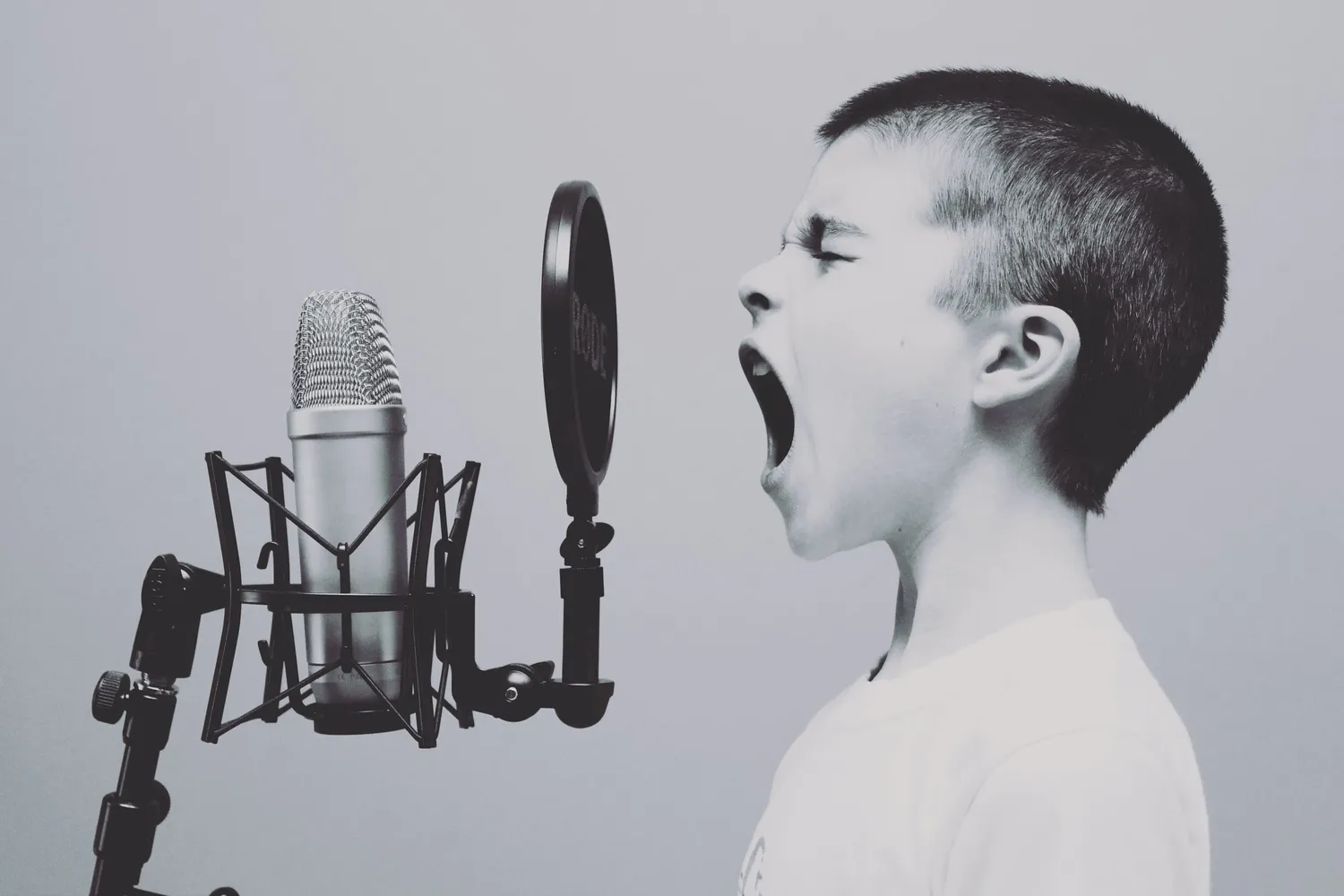
Advanced #
Decibels #
Decibels, which measure the strength of sounds, are not measured linearly. This means they do not increase in a straight line, they’re measured using a logarithmic scale with a base of 10. This is because to make a sound twice as loud, you actually need to multiply its intensity by around 10. Decibels and their logarithmic scale better align to how we perceive sound.
So for a 10 dB increase in amplitude, intensity increases by a power of 10. The difference in volume between 20 and 60 dB is trivial compared to the difference in volume between 60 and 120 dB. Whispering is around 20 dB, a normal conversation is 60 dB, a vacuum cleaner is 80 dB and a jet taking off is 140 dB.
Octaves #
Octaves describe the doubling of frequencies. For example, an octave can represent the interval between 20 Hz to 40 Hz, or 100 Hz to 200 Hz.
Here’s the weird thing, we don’t hear octaves linearly, we perceive the gap between 20-40 Hz and 10000-20000 Hz as the same. But human ears are more sensitive to higher frequency sounds, which helps to explain the way we feel when we hear high frequency sounds like crying babies.
White Noise #
The noises you hear in your everyday life are normally fairly short waveforms, with pretty random distributions of frequency and amplitude.
White noise is the result of low, medium and high frequency sounds being played simultaneously, at the same intensity
White noise, often compared to TV or radio static, is just all the frequencies a human ear can hear (about 20 Hz to 20 kHz), randomly played at the same amplitude. In the same way as a beam of white light is composed of all the colours, white noise is a sound wave with all the frequencies we can hear, at equal power, mixed together.
White noise is often mistakenly used to describe pink noise
What you think of as white noise is probably not actually white noise. The human ear is more sensitive to higher frequencies and white noise is composed of all the audible frequencies at the same intensity, which can sound unpleasant to people.
Colours of Sound #
The different ‘colours’ of sound are defined by their frequency and amplitude in an analogy to the various colours of light.
White noise contains all audible frequencies at the same amplitude, other colours have more or less power in the higher or lower frequencies.
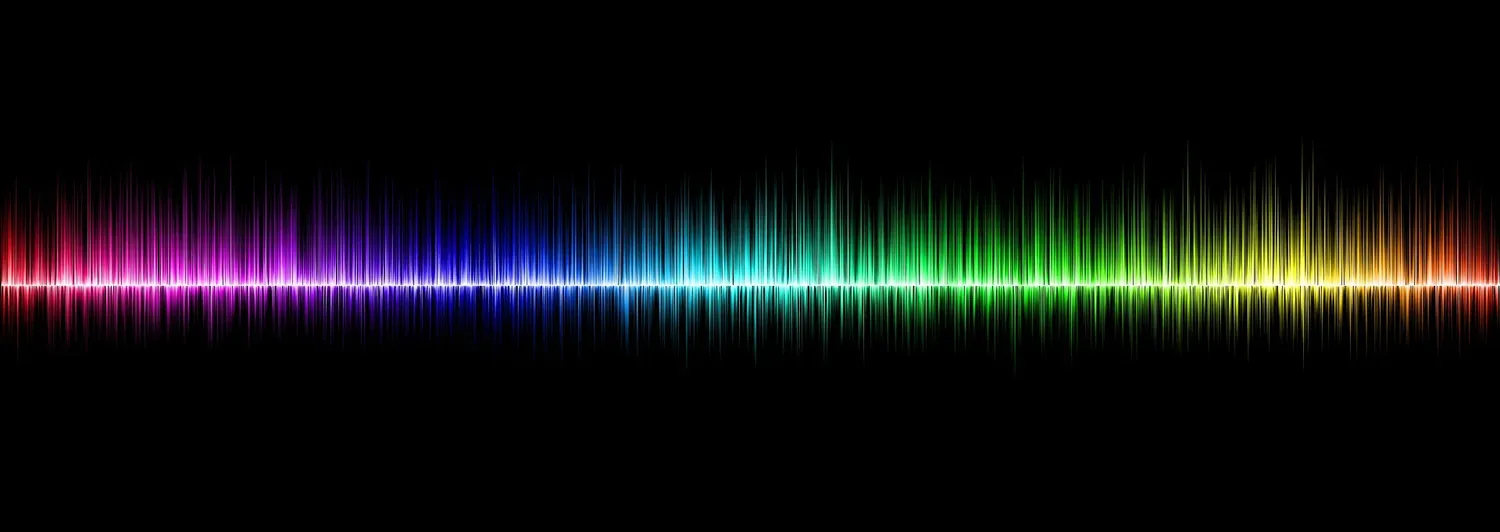
Pink Noise #
Pink noise is less of a ‘bright’ sound than white noise. Pink noise also contains all audible frequencies but in pink noise, as the frequency doubles, the intensity halves, creating a much more balanced sound.
Pink noise is created with more low frequency tones and less high frequency tones. It is more balanced than white noise
People often perceive pink noise as more balanced and flat because it has equal power per octave.
Brown Noise #
Brown noise is not named after the colour but after Robert Brown, who discovered Brownian motion, a phenomenon describing random movements of particles. The ‘colour’ of sound that brown(ian) noise most closely resembles is red. Red noise is similar to pink noise, but with even more intensity at low frequencies.
Brown noise (also known as red noise), contains even more low frequency tones than pink noise. It is deeper than pink noise
In pink noise, energy diminishes around 1-3 dB per octave, in red noise, it diminishes around 6 dB per octave. People often perceive red noise as a deeper, roaring or rumbling sound.
Natural Noises #
White noise is often associated with tv or radio static, pink noise with rain or wind and brown/red noise with thunder or a distant waterfall. All of these sounds can be created by audio engineers but they also naturally occur in the world around us.
The different colours of sound are not just artificially created, they naturally occur all around us
Rain, wind, waves, thunder and noises from man-made devices like tvs, vacuums, fans and many more can all be examples of these different colours of sound, depending on their emphasis on high and low frequencies. When natural sounds are recorded, the engineer recording them needs to ensure that they are covering as close to the full spectrum of frequencies as possible, their intensities can then be adjusted to create any of the many colours of sound.
Rest of the Rainbow #
White noise is the most well known colour of sound, with all frequencies played at the same intensity.
- Pink and red/brown noise have an emphasis on lower frequencies
- Blue and violet noise have an emphasis on higher frequencies
- Blue is the high frequency equivalent of pink
- Violet is the high frequency equivalent of red/brown
- Grey noise has an emphasis on both low and high frequencies. It has intensity at the top and bottom ends of the frequency spectrum, with less intensity in the middle. The human ear generally interprets grey noise as white noise
- Black noise is the absence of noise: silence
Because the human ear is more sensitive to higher frequencies, the colours of sounds weighing towards high frequencies are less often associated to sleep but they can be useful to help mask other high frequency sounds.
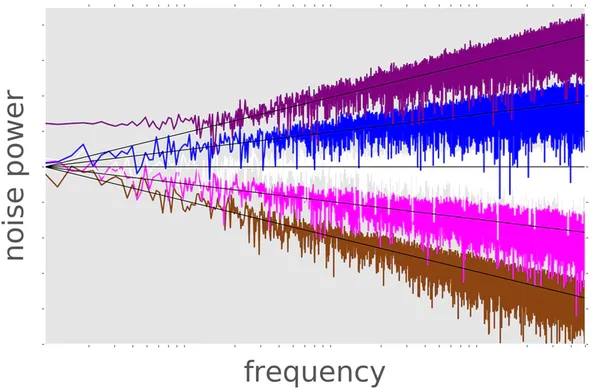
Benefits of Sound #
White, pink and red noise are frequently described as a cushion of sound, or a blanket of noise. Their benefits are mainly derived from their ability to surround you and your baby with consistent noise, cutting thorough any background noise, masking sudden changes or inconsistencies in environmental noise. It’s why people often prefer to hear the sound of a regular CPAP machine over irregular snoring from their partner.
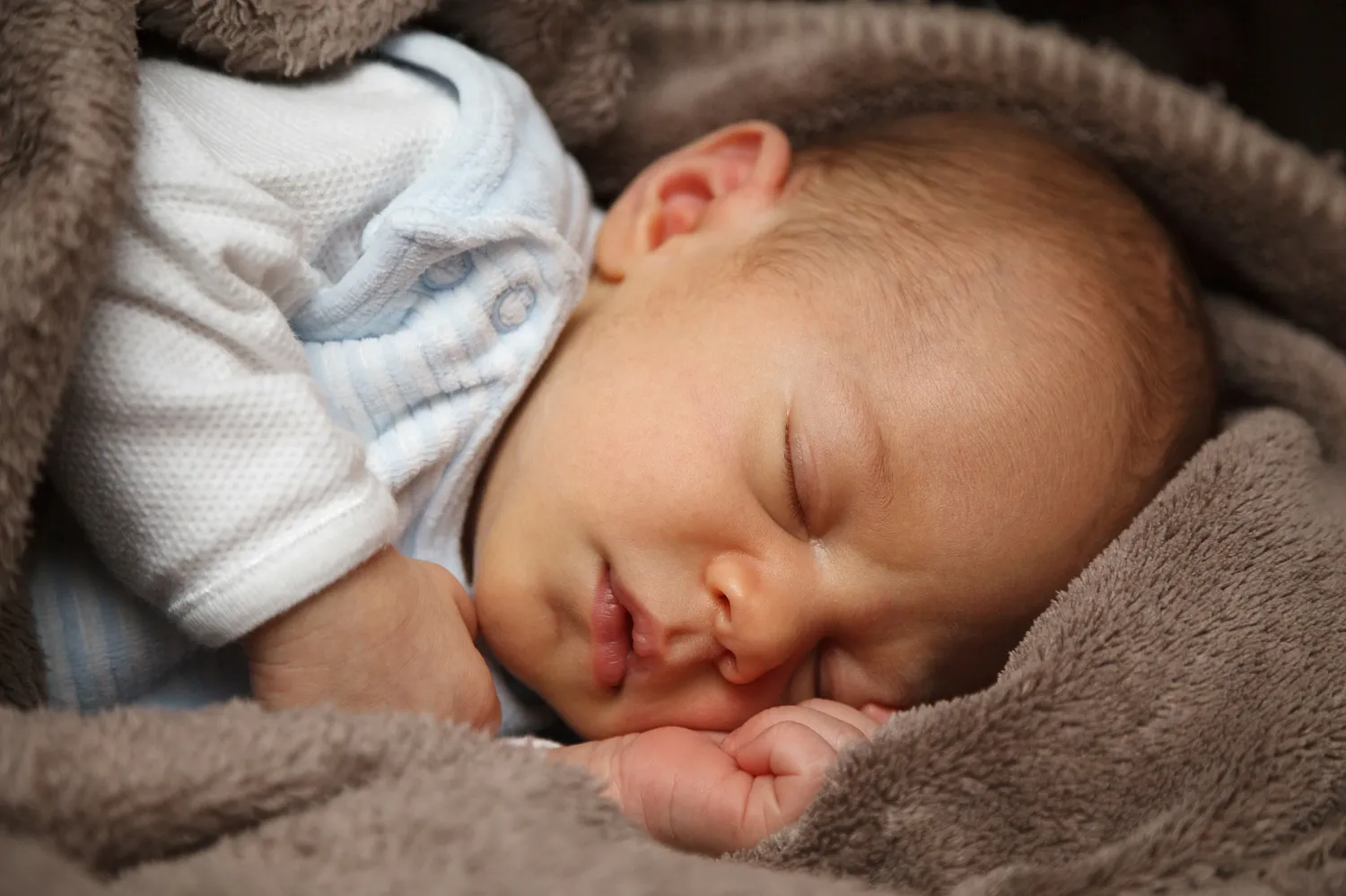
The main benefit of white, pink and red noise is to mask any other noises that can potentially disrupt sleep
People may prefer pink to white or red to pink depending on their sensitivities but the concept remains the same.
Frequent Claims #
There are many claims on the Internet around white noise. It helps your baby to sleep better. It helps adults remain concentrated and focused. It helps your memory. It relaxes you. It soothes headaches. It helps for short naps. It helps for overnight sleep. It helps people suffering from tinnitus. Or, it does the opposite of all these things. It can become addictive. It can damage your baby’s hearing. It will make your tinnitus worse.
Rest assured, you can comfortably use a white noise machine to help your baby sleep. There is no such thing as baby addiction to sound and establishing a routine around sleep is a good thing. Your child will constantly evolve and they will ensure sleep routines change as they grow! Using a white noise machine will not damage your child’s hearing if used responsibly. Some machines are capable of playing sounds at high volumes, you need to be aware of their capabilities and ensure that volumes are set appropriately for the distance between the device and your baby. Ensure that the volume is never at a level that is uncomfortable for you, you can use a decibel meter app on your phone to confirm that volumes do not exceed 85 dB, and ideally remain at 50 - 70 dB.
There have been several studies over the past decades looking into the benefits of white noise. Links to some of these studies can be found below but they must be caveated by the fact that they were all conducted on relatively small sets of subjects.
The studies conducted to date are too limited to conclusively make claims around the benefits of white noise and sleep
No large scale, reputable studies have yet been conducted on the effects of white (and other colour) noise on baby, child or adult sleep.
Studies #
Comparison between swinging and playing of white noise among colicky babies
- Study on 40 babies, 1 month old, in 2016
“Playing of white noise significantly decreased the daily crying durations and increased the sleeping durations of the colicky babies compared to swinging”
White noise and sleep induction
- Study on 40 babies, 2-7 days old, in 1989
“We found that white noise promoted sleep only in babies who were not hungry”
Pink noise effect on complexity synchronization of brain activity and sleep consolidation
- Study on respectively 6, 10 and 40 adults, 21 to 30 years old, in 2012
“Steady pink noise has significant effect on reducing brain wave complexity and inducing more stable sleep time to improve sleep quality of individuals”
Effect of white noise on sleep in patients admitted to a coronary care unit
- Study on 62 adults, 30 years old and above, in 2016
“The use of white noise is recommended as a method for masking environmental noises, sleep induction, improving sleep, and maintaining sleep in the coronary care unit”
- Study on 20 adults, 20 to 65 years old, in 2017
“Broadband sound administration might be helpful to minimize insomnia symptoms in selected individuals”
Different effects of adding white noise on cognitive performance of […] school children
- Study on 90 children, 8 to 10 years old, in 2014
“Adding moderate levels of white noise could benefit the performance of sub-attentive children (as rated by their teachers), while similar changes can impair children with already good levels of attention”
Infant sleep machines and hazardous sound pressure levels
- Study on 14 baby sleep machines in 2014
“Infant sleep machines are capable of producing output sound pressure levels that may be damaging to infant hearing and auditory development”
Hazardous sound outputs of white noise devices intended for infants
- Study on 8 baby sleep machines and 6 iPhone apps in 2021
“We recommend conservative use of white noise machines and apps by avoiding maximal volume setting and placing any device well outside of the crib or at least 30cm away from the child”
Unintended consequences of white noise therapy for tinnitus
- Clinical review in 2018
“Sound therapies using unstructured, random (white) noise should be avoided as a treatment for tinnitus”
Bottom Line #
The best advice we can give is to try different things and find something that works for you and your baby. Sound is very likely to help your baby go to sleep. Your baby was in your womb for most of his or her life, exposed to constant noise created by your body. Beyond that, anything that helps establish a routine around sleep should help your child prepare for it and transition to it.
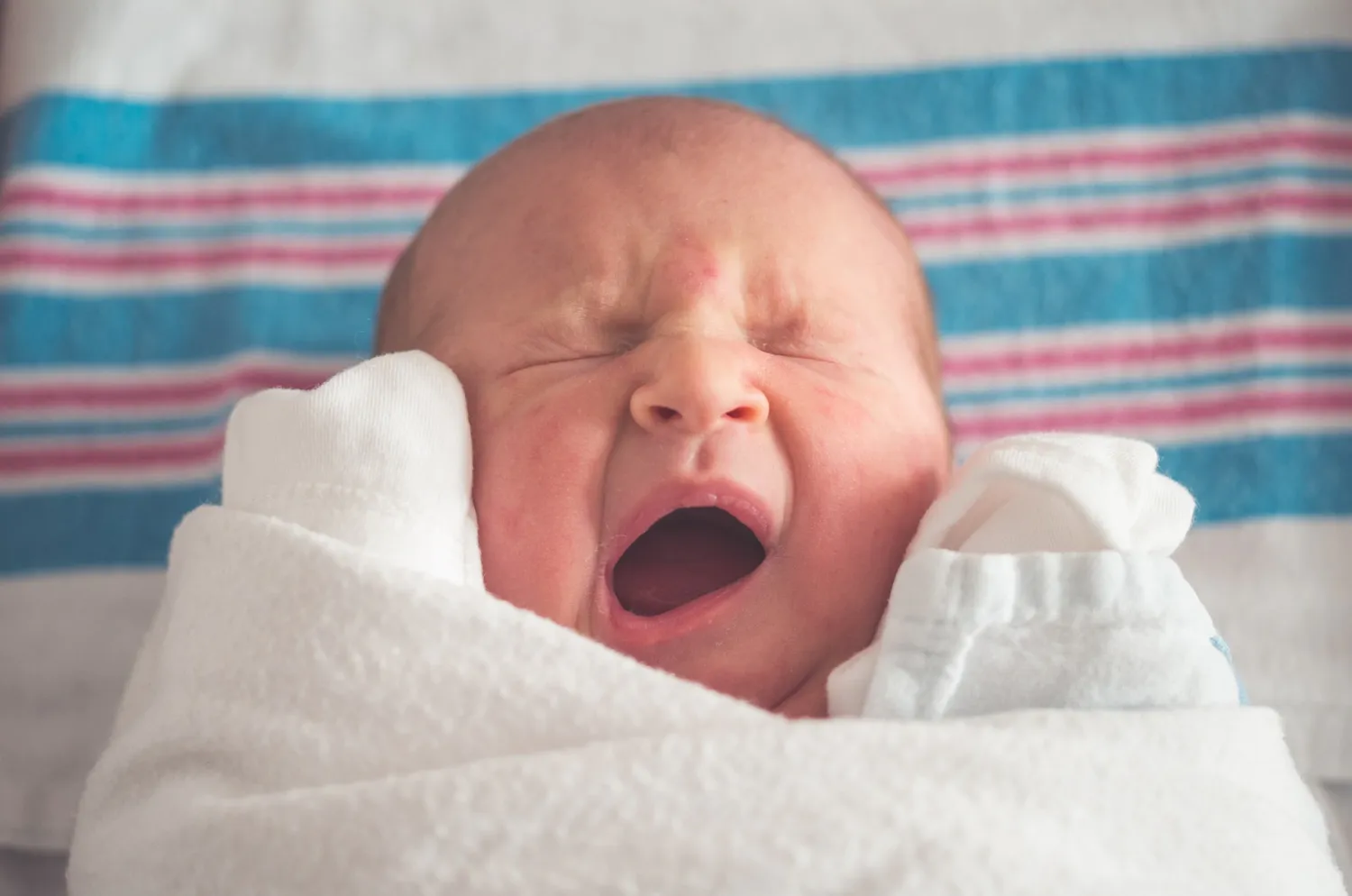
Try artificial noises, white, pink or red. Try natural noises, from streams to waves, rainstorms, thunderstorms, forest sounds, fire, wind and more. Try appliance-related sounds like washing machines, vacuums and hair dryers. Give human sounds like heartbeats, womb sounds, humming or shushing a go. Don’t forget musical sounds like lullabies.
Every baby is different, different sounds work for different children at different times, keep trying until you find something that works for you and your little one
Other than being flexible, because you need to be, here are a few things to consider:
- Consistent sounds are generally better than more sporadic ones
- Try new sounds and approaches for at least a few days, preferably a week, to give them a chance to succeed
- Start with sounds and approaches you like. If you personally hate white noise, leave that to last. If you love humming or have a favourite lullaby try that first. Once you find something that works for your baby, you and your partner will be hearing a lot of it!
- Don’t worry about your baby becoming reliant on a specific sound or approach, do whatever you need to to get them, and by extension you, some sleep. Your baby will change over time and there is no such thing as addiction to sound!
- Get a baby sound machine, something flexible, something that can change with your baby, that will work for them when they’re older and maybe even for future children
- Place the device at a safe distance and set it at a safe volume, appropriate for your baby
- Turn off or lower the volume on the device once your baby is fast asleep, sometimes this is not possible or preferable but it is worth trying

